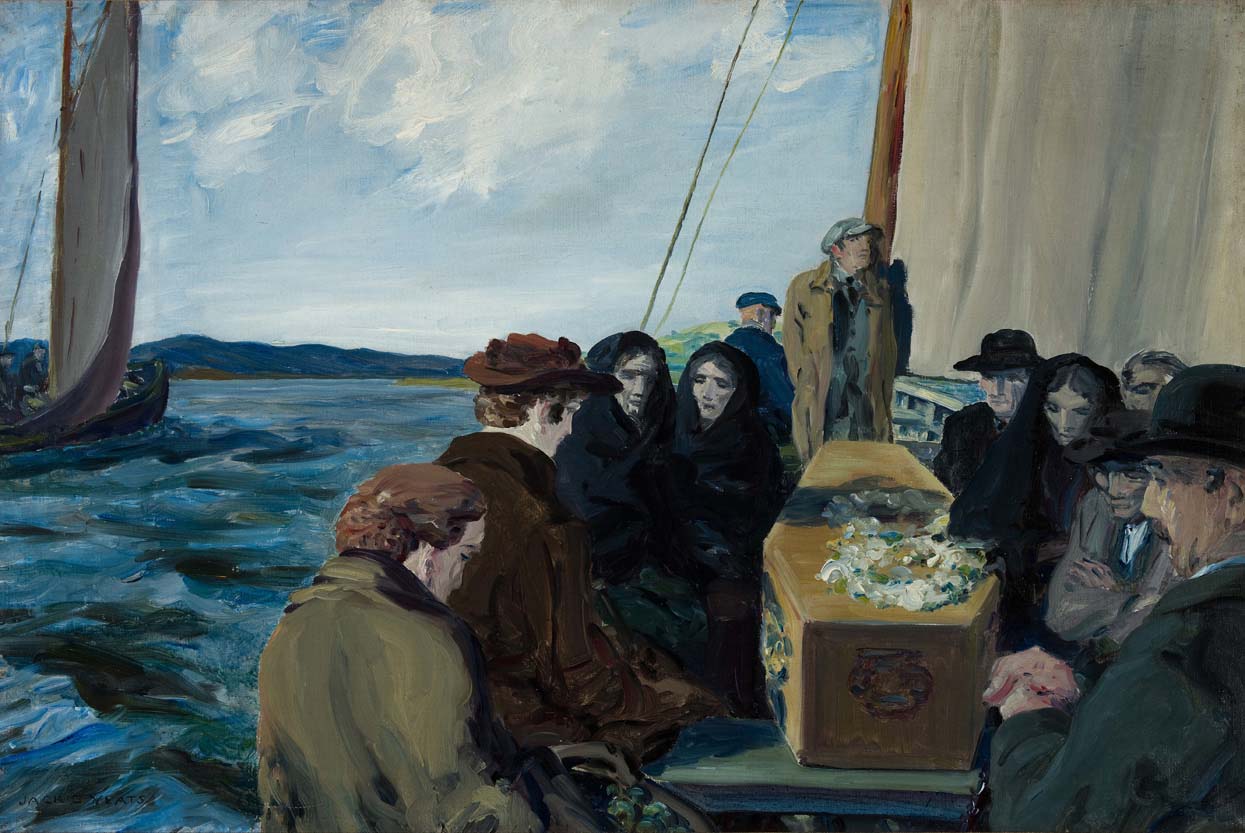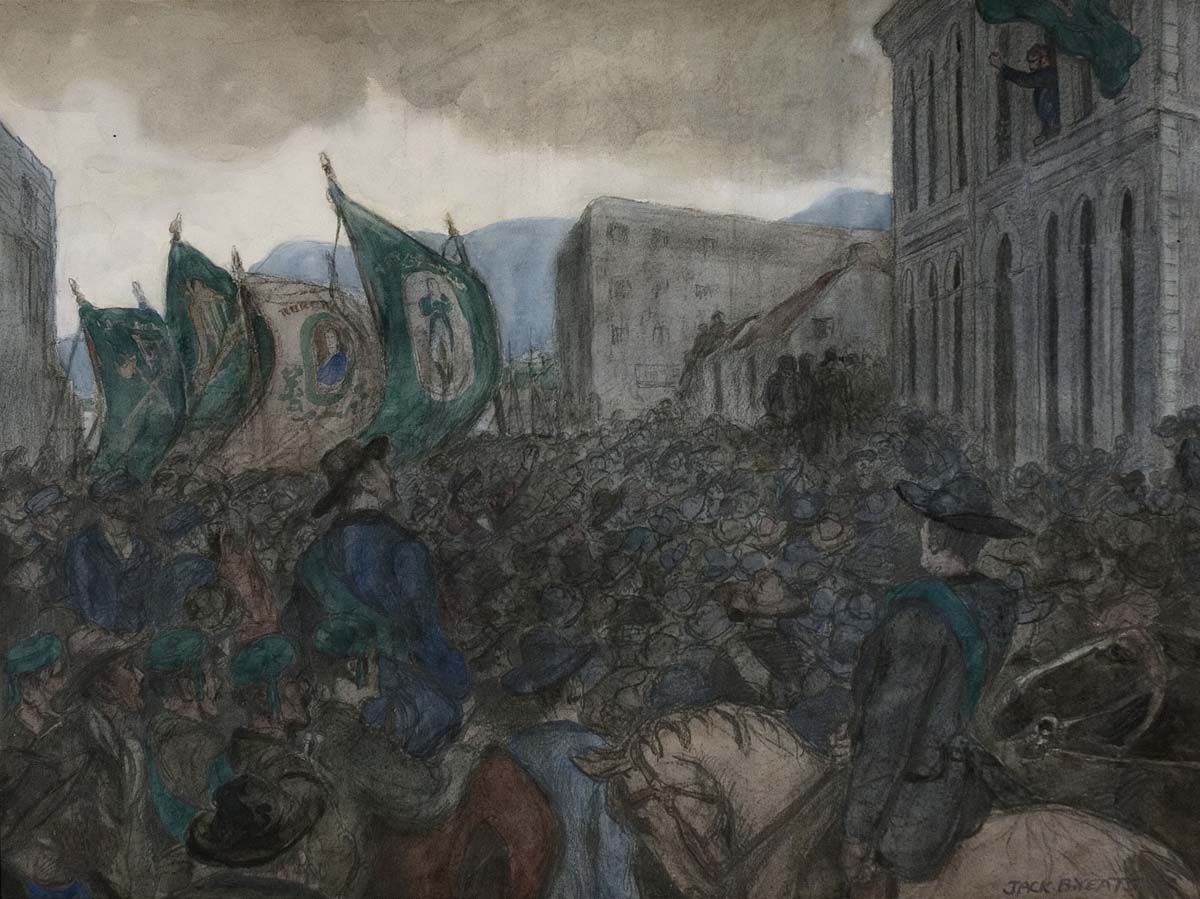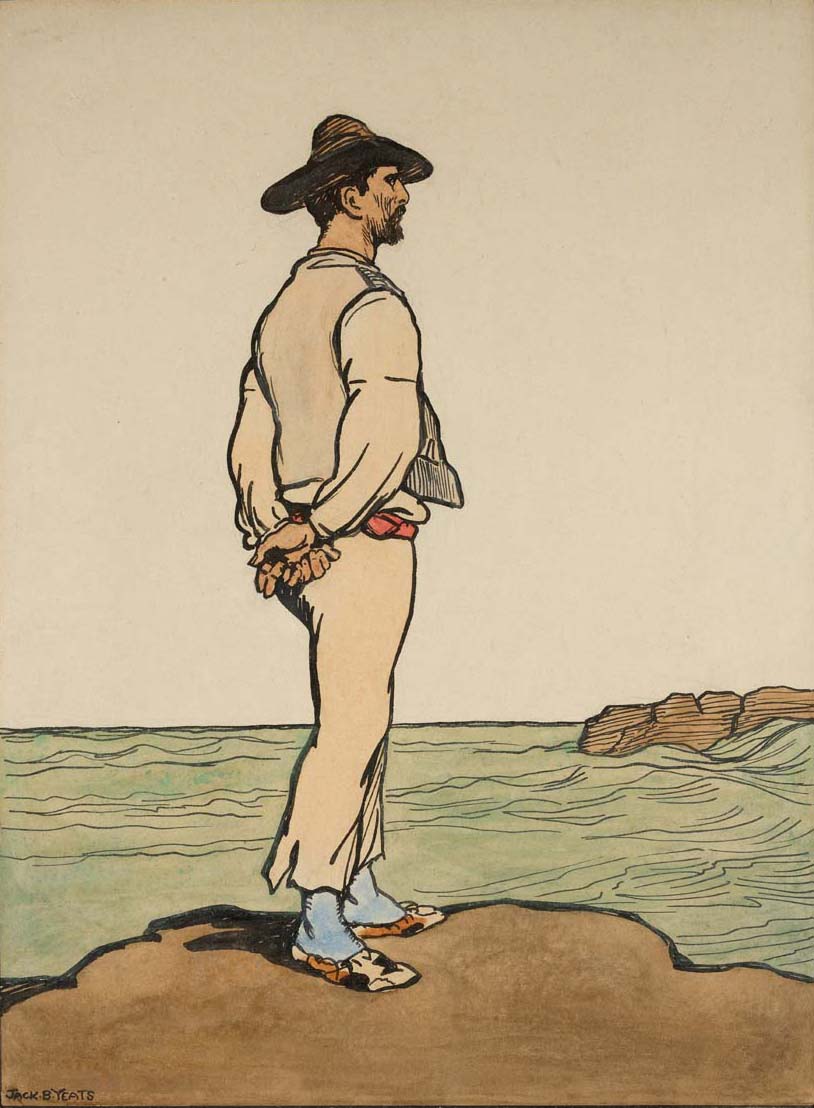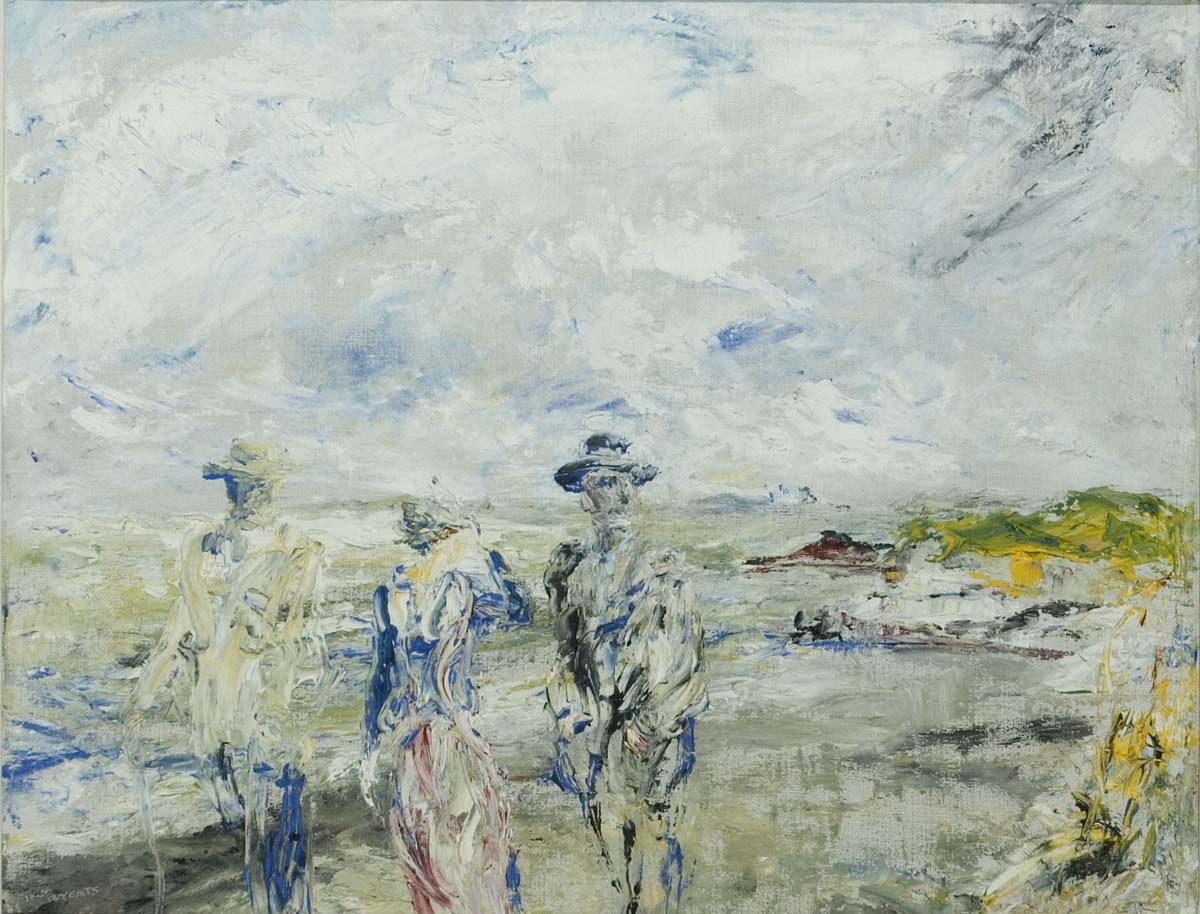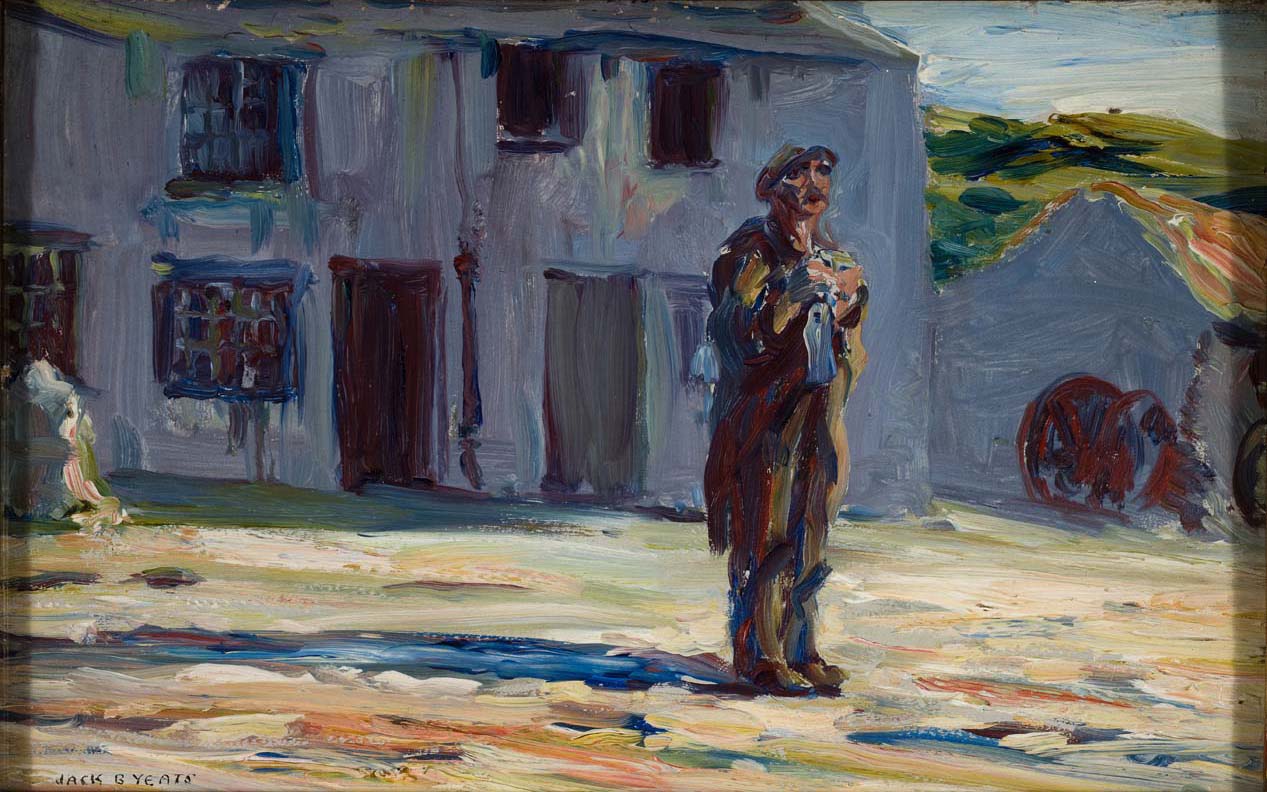Ireland was once covered in forest, but after the arrival of farms in the Neolithic, Ireland's long history of tree felling began. English landlords cut down last of Ireland's great wild forests to build the English Navy.
Everyone in Ireland today you see acres of dark rectangles running up the hillsides. These are tree plantations, mostly Sitka Spruce from North America, a practice which started in the 1930s. The plantations are not forests. Inside they are dark, the tree limbs are dead, and the ground is acid.
The plantations are managed by a private/public partnership called Coilte (sort of pronounced co-il-cha). Coilte manages what used to be managed by the Department of Agriculture, it's a privatization of public lands, basically, and it makes a profit.
With that as your context, enjoy this story from the Irish Times.
The plantations are managed by a private/public partnership called Coilte (sort of pronounced co-il-cha). Coilte manages what used to be managed by the Department of Agriculture, it's a privatization of public lands, basically, and it makes a profit.
With that as your context, enjoy this story from the Irish Times.
Tree-felling ‘conscientious protector’ convicted of timber theft
Welsh-born Sionad Jones tells court of Sitka spruce’s harmful effect on Irish biodiversity
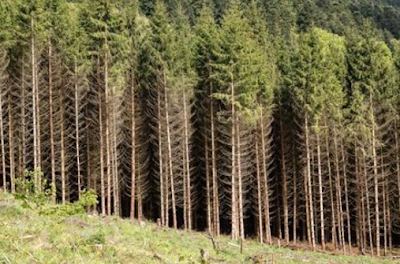
A woman who described herself as “a conscientious protector of the environment” has promised not to cut down any more Sitka spruce after a judge warned her she faced jail if she didn’t stop such activity.
Sionad Jones (61) from Maughnaclea, Kealkill, Bantry, Co Cork had been convicted by a jury of stealing €500 worth of Sitka spruce belonging to Coillteafter she felled some 250 trees at the remote plantation at Maughnaclea.
Jones had been charged with two offences arising out of her actions in 2018 during which she cut down 250 Sitka spruce, ring marked another 250 causing them to die and planted broadleaves in their place at the plantation.
Judge Seán Ó Donnabháin had directed the jury at Cork Circuit Criminal Court to find her not guilty of causing criminal damage following legal argument.
But the jury of four men and eight women took just 38 minutes to find Welsh native Jones guilty of dishonestly, appropriating or stealing 250 logs worth €500 from Coillte.

The judge said he wanted Jones to give an undertaking that there would be no repeat of her behaviour. And he also said she should not cut down, remove and burn any trees from the plantation.
“I understand that I am not to do that again without the permission of Coillte. I understand that and I take it seriously,” said Jones after her barrister, Peter O’Flynn, said she was willing to comply with any order of the court.
The judge said he was still baffled by her behaviour after hearing evidence how she had cut down the trees with a chainsaw and then burned the logs at her home and yet claims to be a protector of the environment.
“I don’t understand how a hero of the greenery can go around with a chainsaw in one hand and a burning log in the other and claim to be a protector of the environment. Where is the protection of the environment in that? he asked.
He also said that he was less than impressed by Jones and a group of her supporters who mounted a protest outside the Anglesea Street Courthouse, using his court as “a platform for idle political engagement”.
He noted Jones had abided by a previous undertaking she had given – when convicted of cultivating cannabis – not to grow any more cannabis plants. And he adjourned the case until October 30th to see she abides by her undertaking.
Garda Fintan Coffey had told the court that he visited the Maughnaclea plantation on December 4th, 2018, when he encountered Jones driving out of the forestry in her green Toyota Starlet. So he stopped her.
She was covered in sawdust when she got out of her car and he noticed she had a chainsaw in the car. After he cautioned her she told him that she had been felling spruce trees in the forest which she knew belonged to Coillte.
He said he saw a large clearing of spruce trees in the forest where he noticed recently felled stumps, stacked logs and ring-marked trees as well as broadleaf trees which had been planted in the ground.
Jones agreed to come into Bantry Garda Station where she made a voluntary statement, admitting she felled Sitka spruce trees and replaced them with 46 native Irish broadleaves including birch, oak, hazel, alder and rowan.
“This morning I was sawing down a few Spruce trees in order to create space to plant different trees, proper trees, native trees,” said Jones adding that she had been cutting down spruce there for 20 years and planting broadleaves.
During explained during her trial that Sitka spruce is not native to Ireland and is having a huge detrimental effect on biodiversity. She said trees spread out as they grow and branches interlink, blocking light.
It meant Sitka spruce plantations are devoid of plant and animal life with plants such as orchids and bilberry no longer able to survive there while insects and native species are badly affected.
The other particular problem with the Sitka spruce plantation at Maughnaclea was that the pine needles led to acidification of the water courses, which had in turn led to the water in her well become acidic.
Broadleaf trees have the opposite effect so that was another reason why she had taken to planting them, as well as trying to restore the biodiversity associated with native Irish forests.
Cross-examined by prosecution barrister Brendan Kelly, Jones described herself as “a conscientious protector of the environment” which she said had the same legal standing as conscientious objectors who refused to go to war.
Asked if she accepted Coillte owned the Maughnaclea plantation, Jones replied she acknowledged the State agency managed it on behalf of taxpayers. But she believed the forest belonged to the people of Ireland and should be protected.
“I’ve been managing the forest for at least 20 years because of Coillte’s neglect of its duties to the Irish people. I took over as a concerned citizen who has a duty of care to ensure biodiversity,” she said.
Updates:
More photos, more updates.
A follow-up in her own words.
























































